—Lisa Hellmer
Riding alone can be tough! It’s difficult finding the motivation after a long day and figuring out what to work on, like coming up with new exercises to keep you and your horses interested. I am here to help with some tips and ideas to work on with your horse when you aren’t sure exactly what to do!
Trainers are always saying to practice more transitions, but why? Well, transitions are some of the best exercises that can be done anywhere, in any order, and really work to improve your horse in many ways. Transitions help develop balance, strength, coordination, and obedience. My favorite transition exercise I call “the pyramid.”
In this exercise, we begin at the walk. Start by riding a series of walk halt transitions. Work to use your breath during these: exhale on the downward transition, close your fingers on the reins and provide a supporting lower leg. In the upward transitions, sit up straight, evenly close your legs on both sides of the horse, and maintain a steady contact on the outside rein. Ride these until you have a square halt and your horse walks off promptly from this halt.
Next, move up to trot. You will ride a series of walk-trot transitions. Here, you focus on the promptness and responsiveness of your horse in both upward and downward transitions. Use your breath to exhale in the downward transitions to walk and focus on energy in both the walk and trot. Once these feel easy and your horse has figured out the exercise, stay in trot and move up to trot-canter transitions. This seems easy at first, but it’s where the exercise gets more difficult.
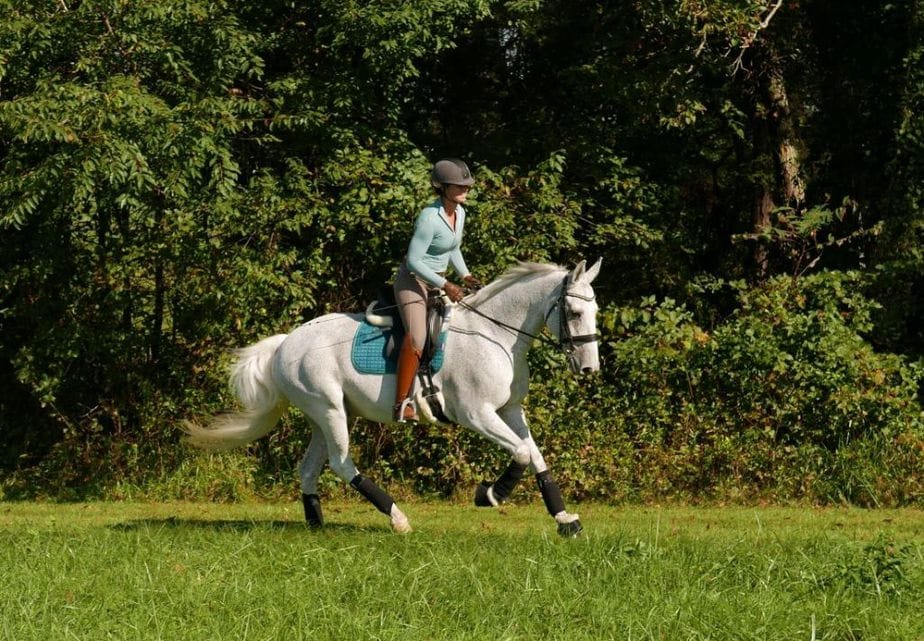
Trot-canter transitions work on keeping your horse’s hind legs quick because they have to rebalance in the trot to push up to the canter. Focus on not “running” into the canter; rather, encourage the horse to sit in the transition up to canter. Often slowing the trot a few strides before the transition to canter helps organize the horse. After riding a series, this also should start getting easier for you both.
Now that you’ve made your way to the top of your pyramid (the canter), let’s go back down. After your trot-canter transitions, we work again on walk-trot transitions, and then walk-halt transitions until you have nice, quiet, square halts.
Phewwwww! Just kidding… Change direction! Ride up your pyramid onto the other lead, and then make your way back down.
This is one of those super-simple exercises that can help your horse tremendously. It works to strengthen their hind ends, help them learn to engage their hind end and “sit,” and is almost as affective as riding hills! Take your time with these transitions. Don’t be in a hurry to complete each transition, and allow yourself time to stay straight and organized with your aids.
I like riding this exercise on a 20-meter circle to help maintain a little inside bend and provide a clear structure for the horse. This helps horses find their balance on their hind end in the upward transitions and helps avoid moments where the horse might get too long and flat (like on a straight line down the long side). Don’t forget to have fun!
LCH Equestrian
www.lisahellmer.com
 @LCHEquestrian
@LCHEquestrian
 @LHdressage
@LHdressage
Lisa Hellmer is working toward the Grand Prix with her Oldenburg “Aniko.” She graduated summa cum laude from Johnson & Wales University with a degree in equine business management and riding. As a former event rider, Lisa brings that experience into building EQuine AMerica’s Cavaletti Crossfit posters and her cross-training lessons, which you can find here. Recently, Lisa became a USEF Silver Para Dressage Coach and formed LCH Equestrian in Ocala, FL where she continues to focus on dressage, para dressage, and cross-training the dressage horse.




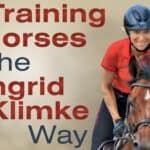





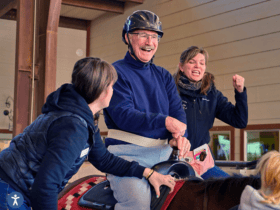
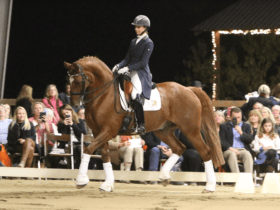
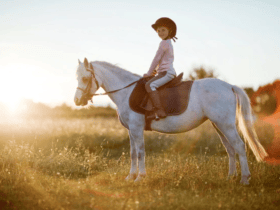
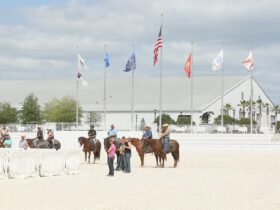


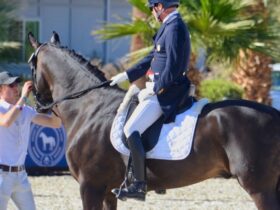
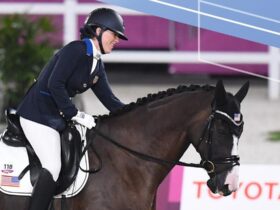
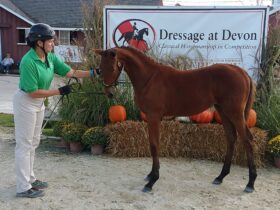


SOCIAL